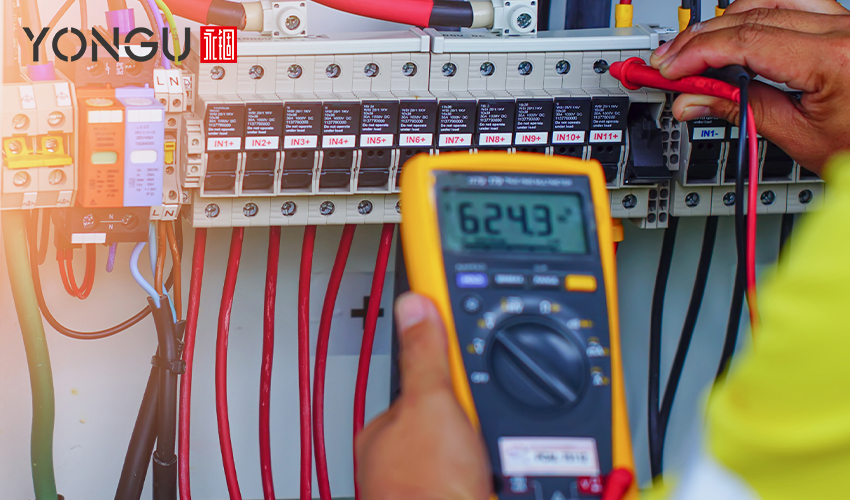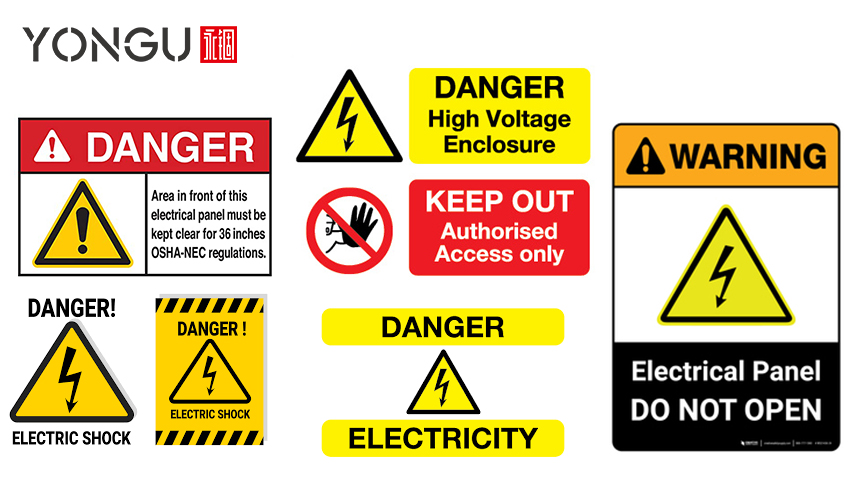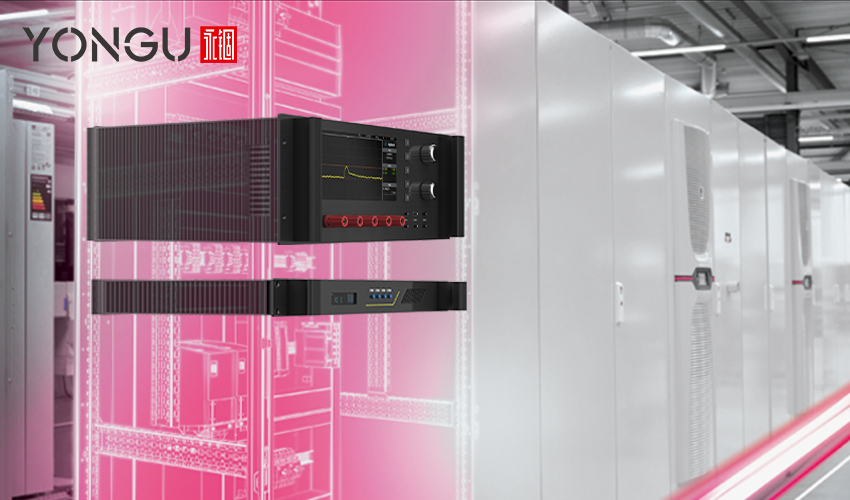When it comes to electronic and electrical enclosures, making the most appropriate selections for the devices that validate the system's safety and controls is essential. The equipment and the operators might be at risk if the control enclosures are selected incorrectly.
What is Electrical Enclosure Safety?
When it comes to safeguarding a device's components and users from harm, there are a variety of standards and systems in place to ensure their safety and the safety of others.
In an ideal world, electrical enclosures would:
- Keep their components safe from harmful elements.
- They prevent the components from overheating by including specific methods, such as enclosure cooling systems.
- Prevents unwanted access to the electrical enclosure's components by preventing the spread of explosions and electric shock.
- Prevents unauthorized persons from accessing the components in the electrical enclosure.

Electrical enclosure safety signs are messages or information on the electrical enclosure to:
Indicate Danger
They are for situations where severe injury or death may occur.
Act as Warning
Although the electrical enclosure safety sign indicates situations where serious injury or death may occur, the risk is not severe.
Show Caution
The risk is moderate, mainly used to express unacceptable practices around the electrical enclosures.
Generally, the electrical enclosure safety signs are designed to warn and caution users from accessing, touching, handling, or being close to electrical cabinets without:
- Special permission
- Technical expertise and experience
- Safety wear

Best Practices
Here are some crucial things to know before buying your electronic and electrical enclosure:
Weight Of Device
Determine how much your device weighs before purchasing an enclosure. It's not always the case that a perfectly matched enclosure is the right one. When purchasing an electronic enclosure, remember that it has a weight restriction. Determine the number of components that will be fitted in your enclosure before you buy it. After enclosing the device, you'll want to figure out where you'll install your enclosure. These particulars are vital to your safety and should not be overlooked.
Material Of Enclosures
Make sure that the enclosure you select is constructed from the appropriate materials. In the electronics and electrical markets, there are a variety of materials for enclosures. Each has its pros and cons, ranging from cost to lifespan. In safety, the cost isn't the only factor to consider; reliability and durability are equally important.
Polycarbonate plastics, for instance, may not be ideal in an area with severe chemicals. Instead, steel or other metal enclosure may be more suited. Any plastic used for an exterior installation must be UV stabilized. Aluminium may be utilized because of its long-term durability, lightweight, and ease of transportation.
Installation Location Of Enclosed Device
Before purchasing an electrical or electronic enclosure, it is vital to determine where the item will be mounted. If you set it against a wall, cabinet, or ceiling, then you really need an enclosure with a wall mount. This is something that should be obvious. When selecting an electronics enclosure for a product, you must also be aware of any environmental hazards that might damage it. If it's going to be outside, you'll want to ensure it's protected from the weather conditions, so it must be a weatherproof enclosure. Alternatively, if it's going to be put indoors but will be subjected to high temperatures, consider investing in a flame-resistant casing.
Devices To Be Installed In The Enclosure
What sort of electrical equipment will be put in the enclosure is an additional factor that must be considered. This is critical, as extending the lifespan of your equipment begins with selecting the finest and most appropriate enclosure. Secondly, this will extend the life of the components inside the enclosure. Third, environmental safety will be ensured as a result of this. If your gadget requires access to batteries or slots for switches, wires, or display panels, you'll also need to know that.
For these reasons, you should ask a greater number of questions, such as
Enclosure Safety Ratings
Make sure that the enclosure you select has the appropriate ratings. Does the enclosure require specific ratings, or may it be used without them? Is a UL rating required, or would the NEMA ratings provided by the manufacturer suffice? NEMA enclosures are available in various materials, including ABS plastic, which does not have UL certification. However, it is less expensive than those that have received UL certifications. This is an ideal combination of cost and performance for most applications.
For the same reason, is it possible to utilize a less secure box? For example, while a NEMA 12 enclosure has historically been used, a NEMA 1 box may be sufficient. Similarly, it is essential to consider if your enclosure needs IP ratings and, if so, which level of protection will decide what IP rating is required.
It's also possible to save money by deciding whether or not simply a single internal component has to be protected from electromagnetic interference (EMI/RFI).
Requirements Of Modifications For Your Enclosure
If you modify your electrical enclosure, your gadget will fit perfectly. This is an extremely crucial thing to keep in mind. It's possible to modify an electronics enclosure if you need a slot for switches, for example, but it doesn't contain anyYONGU. Youcan design a customized enclosure to meet the specific needs of your project or work.
Financial Constrains
There is a purpose for putting this at the end of the list. The price should not be the primary consideration, although we know that financial constraints are essential. This is simply a friendly reminder that the cost of anything shouldn't be the only element you consider when making a purchase, regardless of how low or high it is. The enclosure needs to fulfil all of your primary requirements, and once you have decided which options are available to you, you can next think about your financial constraints.

YONGU INSTRUMENT BOX
Extrusions manufactured by YONGU explicitly designed for instrument electronics are put to use in the production of enclosures to protect electronic components and other types of electrical equipment. Each is crafted to meet specific quality criteria and comes with a unique set of features and benefits.
YONGU Cutout Customized Power Supplier Aluminum Electronic Equipment Enclosures J36 120*46mm
It is available in 61 different models with a built-in split-type extrusion structure including 1pc top housing, 1pc bottom housing, 1pc front panel and rear panel. Good heat dissipation, easy to be assembled. L shape brackets for panels can be customized to wall mount.
Its specific features include
For further information and customized product of your requirements, please follow our FACEBOOK for more updates and informations.
You can also contact us at +86 13326782625 or write us [email protected].
Here are some crucial things to know before buying your electronic and electrical enclosure:
Weight Of Device
Determine how much your device weighs before purchasing an enclosure. It's not always the case that a perfectly matched enclosure is the right one. When purchasing an electronic enclosure, remember that it has a weight restriction. Determine the number of components that will be fitted in your enclosure before you buy it. After enclosing the device, you'll want to figure out where you'll install your enclosure. These particulars are vital to your safety and should not be overlooked.
Material Of Enclosures
Make sure that the enclosure you select is constructed from the appropriate materials. In the electronics and electrical markets, there are a variety of materials for enclosures. Each has its pros and cons, ranging from cost to lifespan. In safety, the cost isn't the only factor to consider; reliability and durability are equally important.
Polycarbonate plastics, for instance, may not be ideal in an area with severe chemicals. Instead, steel or other metal enclosure may be more suited. Any plastic used for an exterior installation must be UV stabilized. Aluminium may be utilized because of its long-term durability, lightweight, and ease of transportation.
Installation Location Of Enclosed Device
Before purchasing an electrical or electronic enclosure, it is vital to determine where the item will be mounted. If you set it against a wall, cabinet, or ceiling, then you really need an enclosure with a wall mount. This is something that should be obvious. When selecting an electronics enclosure for a product, you must also be aware of any environmental hazards that might damage it. If it's going to be outside, you'll want to ensure it's protected from the weather conditions, so it must be a weatherproof enclosure. Alternatively, if it's going to be put indoors but will be subjected to high temperatures, consider investing in a flame-resistant casing.
Devices To Be Installed In The Enclosure
What sort of electrical equipment will be put in the enclosure is an additional factor that must be considered. This is critical, as extending the lifespan of your equipment begins with selecting the finest and most appropriate enclosure. Secondly, this will extend the life of the components inside the enclosure. Third, environmental safety will be ensured as a result of this. If your gadget requires access to batteries or slots for switches, wires, or display panels, you'll also need to know that.
For these reasons, you should ask a greater number of questions, such as
- Does the gadget contain any chemicals that might potentially leak out?"
- Does the equipment having heating issues?
- Is it necessary for me to swap between panels and screen panels?
- Do I require exhaust fan slots on my enclosure?
Make sure that the enclosure you select has the appropriate ratings. Does the enclosure require specific ratings, or may it be used without them? Is a UL rating required, or would the NEMA ratings provided by the manufacturer suffice? NEMA enclosures are available in various materials, including ABS plastic, which does not have UL certification. However, it is less expensive than those that have received UL certifications. This is an ideal combination of cost and performance for most applications.
For the same reason, is it possible to utilize a less secure box? For example, while a NEMA 12 enclosure has historically been used, a NEMA 1 box may be sufficient. Similarly, it is essential to consider if your enclosure needs IP ratings and, if so, which level of protection will decide what IP rating is required.
It's also possible to save money by deciding whether or not simply a single internal component has to be protected from electromagnetic interference (EMI/RFI).
Requirements Of Modifications For Your Enclosure
If you modify your electrical enclosure, your gadget will fit perfectly. This is an extremely crucial thing to keep in mind. It's possible to modify an electronics enclosure if you need a slot for switches, for example, but it doesn't contain anyYONGU. Youcan design a customized enclosure to meet the specific needs of your project or work.
Financial Constrains
There is a purpose for putting this at the end of the list. The price should not be the primary consideration, although we know that financial constraints are essential. This is simply a friendly reminder that the cost of anything shouldn't be the only element you consider when making a purchase, regardless of how low or high it is. The enclosure needs to fulfil all of your primary requirements, and once you have decided which options are available to you, you can next think about your financial constraints.

YONGU INSTRUMENT BOX
Extrusions manufactured by YONGU explicitly designed for instrument electronics are put to use in the production of enclosures to protect electronic components and other types of electrical equipment. Each is crafted to meet specific quality criteria and comes with a unique set of features and benefits.
YONGU Cutout Customized Power Supplier Aluminum Electronic Equipment Enclosures J36 120*46mm
It is available in 61 different models with a built-in split-type extrusion structure including 1pc top housing, 1pc bottom housing, 1pc front panel and rear panel. Good heat dissipation, easy to be assembled. L shape brackets for panels can be customized to wall mount.
Its specific features include
- Electronic Enclosures
- The side plates are equipped with heat dissipation, which enhances the heat dissipation effect and adds a beautiful appearance of industry and design to the cabinet.
- The front and back handles and the side corners are all CNC processed, which will let you have the technology feeling.
- Inner plates can reduce the fixing of parts such as screws and rivets on the surface. In the meantime, the material iron will be stronger than the aluminium plate if they have the same thickness, which is suitable for placing heavy components.
- The length, width and height can be changed. The length is modularly increased or decreased according to the 50mm or 100mm as one unit.
- The front and rear plates are 6mm.
- Anodizing colours for the whole set can be customized.
- Screws can't be seen on the front side, and the screws are using some unique models, which will make your equipment safer with IP54 ratings.
- The rubber foot pads can be slip-proof and moisture-proof and have a protective effect on internal components.
- Completely customizable in every aspect of dimension, hole drilling, screws, surface treatment and printing.
For further information and customized product of your requirements, please follow our FACEBOOK for more updates and informations.
You can also contact us at +86 13326782625 or write us [email protected].



